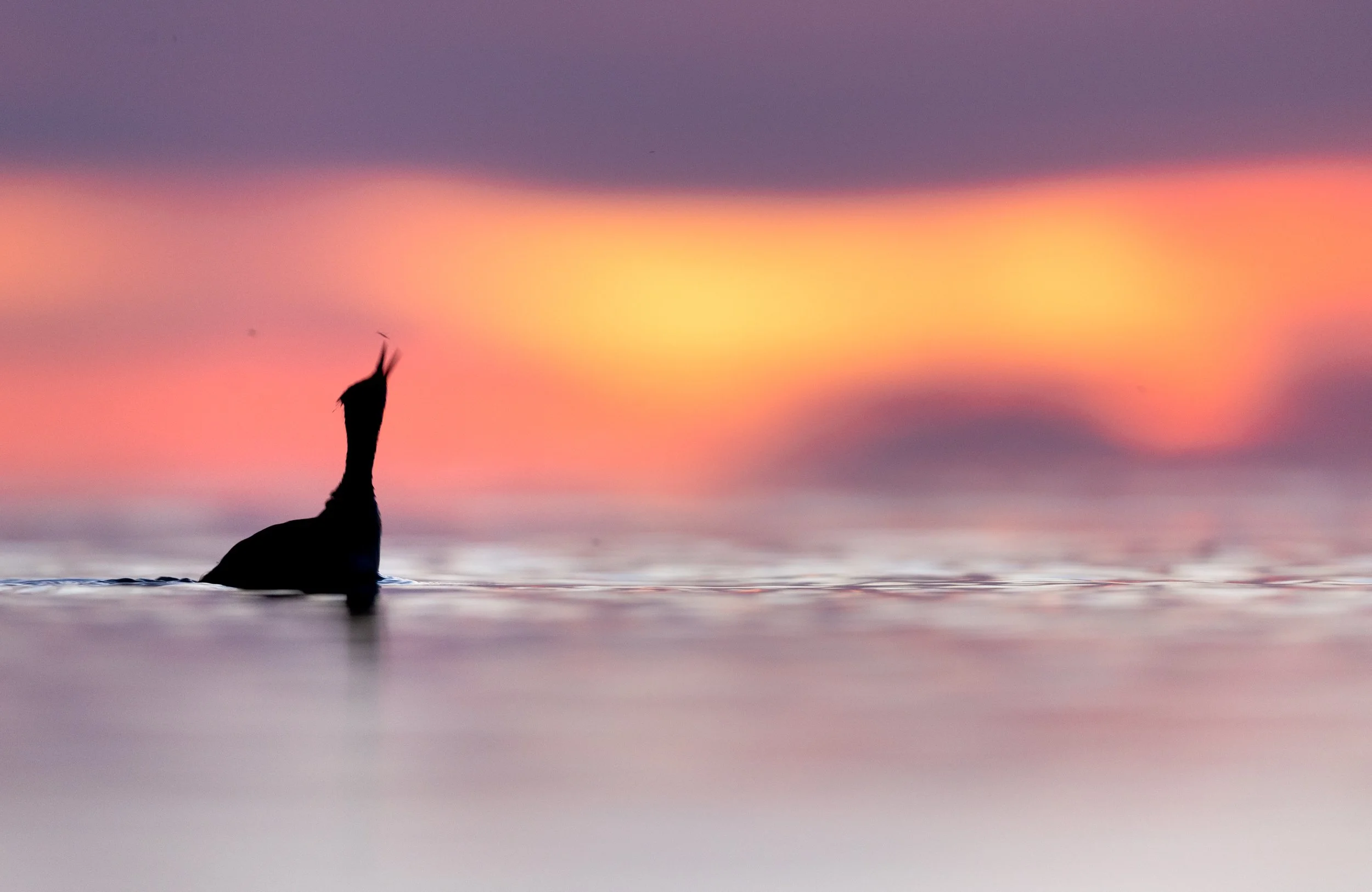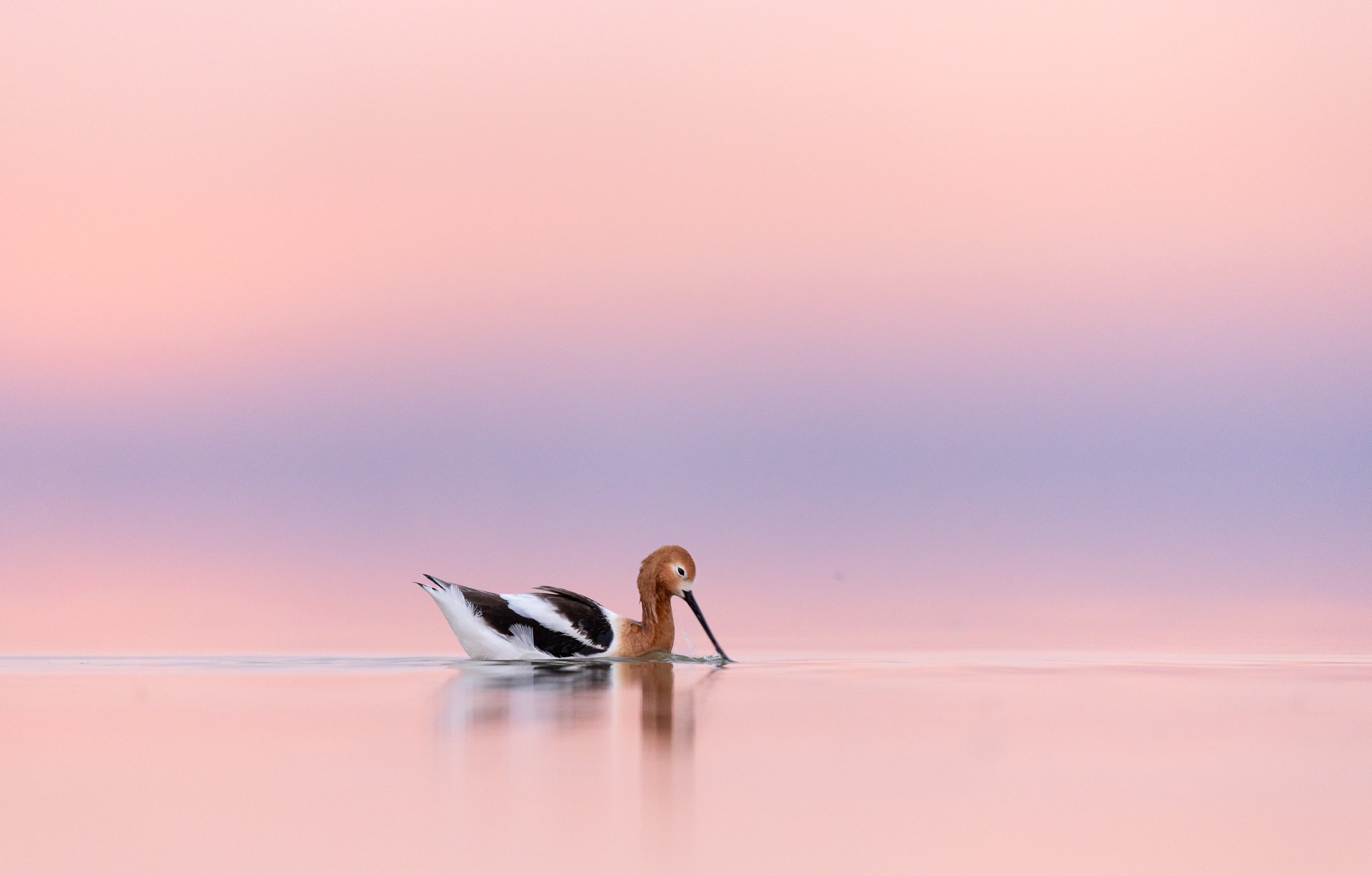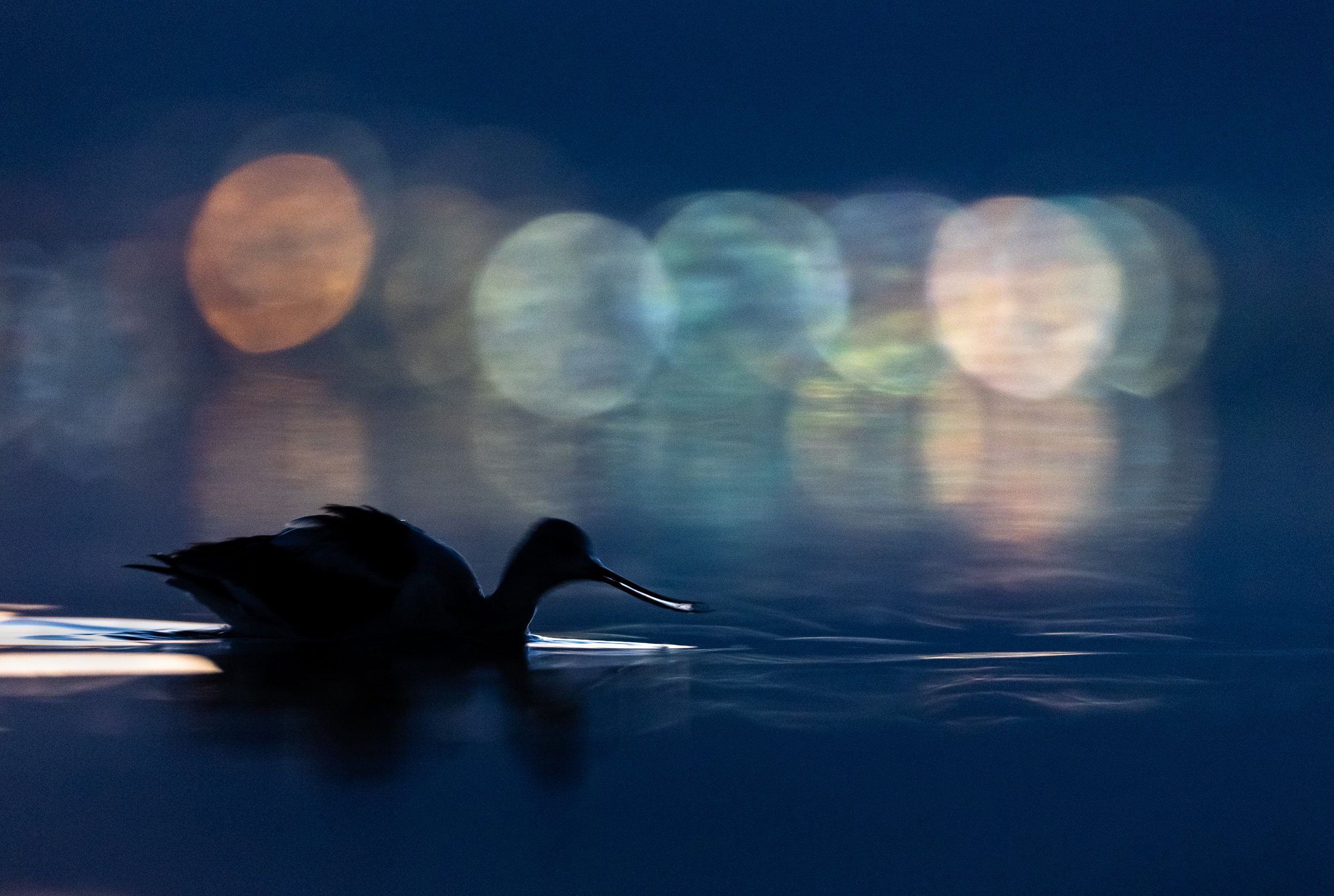
GREAT SALT LAKE
North America’s largest terminal basin lake is vanishing, endangering the single most important habitat for migratory birds in the American West, and exposing millions of people to toxic dust pollution.
-
Scenes from the otherworld
Great Salt Lake, bordered by alpine mountains to the east and stark desert to the west, is a study in contrasts. The lake is so large that at some points the horizon disappears due to the curvature of the earth. The lake can turn into a perfect mirror on windless days, and the landscape conspires with light and atmospheric conditions to produce surreal effects at times. Despite its harsh and seemingly bleak landscape, the lake is teeming with life and color. My work juxtaposes the vibrant bird life of Great Salt Lake with its otherworldly landscapes.

American Avocets cross paths in the open expanse of Great Salt Lake. This large inland sea in Utah, USA offers a unique ecology and a strikingly beautiful environment. The shallow water and large distances conspire with light and atmoshperic conditions to produce otherworldly effects at times.

Lesser Scaup at sunset on Great Salt Lake. This shallow inland sea is so large that at some points the horizon disappears due to the curvature of the earth. The lake can turn into a perfect mirror in the absence of any wind, and this quality along with the lack of horizon can result in a surreal effect.

An American Avocet feeds at Great Salt Lake during the early predawn, with city lights sparkling in the distance. The lake supports over ten million birds, and its shores are home to nearly two million people. Both humans and birds rely on the same water flowing into Great Salt Lake, which is drying up due to drought and human consumption.

A Northern Shoveler duck paddles across Great Salt Lake in a reflected scene of clouds and the Wasatch Mountains rimming the lake. The Wasatch Mountains supply much of Great Salt Lake's water in the form of snowmelt. Increasing diversion of that snowmelt for agriculture and booming development along the Wasatch Front threatens the existence of Great Salt Lake.

Northern Shoveler ducks glide through rays of sunlight streaming over the Wasatch Mountains and reflecting off the surface of the Great Salt Lake. The lake sits at the confluence of the Pacific and Central flyways and serves as a migratory hub for ten million birds across two continents, including 3-4 million waterfowl. Its central position and rich food supply makes the Great Salt Lake and surrounding wetlands the single most important bird habitat in the American West. In this image, the lake appears merged with the Wasatch Mountains that form its Eastern boundary and supply much of its water in the form of snowmelt.

An Eared Grebe after sunset at Great Salt Lake. This large inland sea provides a unique habitat for birds and a striking visual landscape. On windless days, the lake can produce spectacular reflections on its vast expanses of flat water. Here, a lone Eared Grebe paddles under darkending clouds toward a spit of land jutting into the lake. The scene is perfectly reflected in the lake.

A lone Eared Grebe in the Great Salt Lake. About half of the world's Eared grebes (as many as 3-4 million individuals) stop to feed at this shallow inland sea on their way south for winter, and then lose their flight muscles for several months. Being almost incapable of walking on land, they are essentially stranded in the vast open water of the lake until they gain enough fat reserves to complete their migration. This makes Eared grebes both deeply dependent on the lake's ecology and deeply vulnerable as the lake declines.

A Norther Shoveler drake glides across the shallows of Great Salt Lake with the Wasatch mountain range in the far distance and reflecting on the lake surface.

American Avocet takes a break from preening to look my way.

Eared Grebe lunges for a fly at Great Salt Lake.

Eared grebes during a fiery sunset on Great Salt Lake.

American Avocet feeds at Great Salt Lake at sunset.

American Avocets foraging during a colorful sunset at Great Salt Lake with the Wasatch Mountains in the distance.

An Eared Grebe at Great Salt Lake at sunset.

An American Avocet feeds early in the morning at the Great Salt Lake, with the lights of the city creating colorful bokeh in the distance.